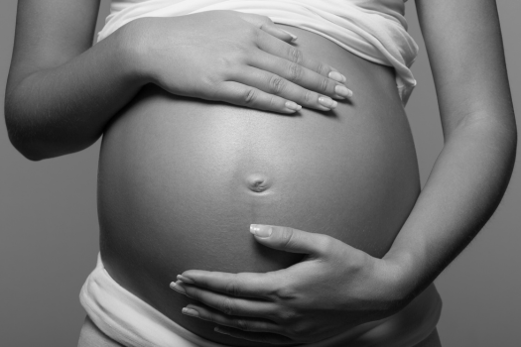
Pregnancy is a beautiful journey filled with joy and anticipation, but it can also bring its fair share of discomforts. One common issue some pregnant women face is sciatica, a painful condition caused by compression or irritation of the sciatic nerve. While sciatica can occur for various reasons, it tends to worsen during pregnancy due to specific factors. This article discusses those factors and offers tips on how expectant mothers can find relief and enjoy smoother pregnancies.
Changes in Weight Distribution
As pregnancy progresses, a woman's body undergoes remarkable changes to accommodate the growing baby. One significant change is the shift in weight distribution, which can exert additional pressure on the lower back and pelvic region. This increased pressure can aggravate the sciatic nerve, leading to heightened sciatic pain, especially if the last stages of sciatica coincide with the later stages of pregnancy.
Hormonal Influences
During pregnancy, the body releases hormones such as relaxin, which aids in loosening the ligaments to prepare for childbirth. While this is essential for the delivery process, it can also result in reduced stability in the pelvic area. As a consequence, the sciatic nerve can become more susceptible to compression or irritation, intensifying sciatic pain.
Postural Adjustments
As the baby grows, the mother’s posture naturally adapts to accommodate the expanding uterus. This altered posture can inadvertently strain the lower back and pelvic muscles, potentially exacerbating sciatica. Furthermore, maintaining an uncomfortable posture due to sciatic pain can create a vicious cycle during which pain leads to poor posture and poor posture worsens the pain.
Pressure from the Uterus
As the baby grows and the uterus expands, it may exert direct pressure on the sciatic nerve and the surrounding muscles, leading to increased discomfort. This pressure can be particularly pronounced during the third trimester, when the baby has grown significantly larger.
The Baby's Positioning
The position of the baby in the womb can also play a role in aggravating sciatic pain. If the baby's head or limbs press against the sciatic nerve, it can cause discomfort and pain for the expectant mother.
Weight Gain
Weight gain is a natural part of pregnancy, but excessive weight gain can contribute to increased pressure on the lower back and pelvic region. This added pressure can intensify sciatica symptoms, making weight management an essential aspect of pain management during pregnancy.
Lack of Physical Activity
Pregnancy may limit a woman's ability to engage in regular physical activities, leading to decreased muscle strength and flexibility. Weak muscles can contribute to poor posture and spinal alignment, making pregnant women more susceptible to sciatic pain.
Preexisting Back Issues
For some expectant mothers, preexisting back issues may be aggravated during pregnancy, leading to sciatica. Conditions such as herniated discs or spinal stenosis can worsen due to the hormonal and postural changes during pregnancy.
Finding Relief: Practical Solutions
While experiencing sciatica during pregnancy can be challenging, there are several effective ways to find relief:
- Apply heat or cold packs to the affected area for 15 to 20 minutes several times a day. Heat can relax tight muscles and increase blood flow, while cold can reduce inflammation and numb pain.
- Do gentle stretches for your lower back, hips, and legs. This can loosen tense muscles and increase flexibility and posture. You can try some of these stretches for sciatica during pregnancy.
- Avoid lifting heavy objects or twisting your spine. This can aggravate your condition and cause more damage to your nerves.
- Wear supportive shoes and avoid high heels. This can help you maintain your balance and alignment and reduce pressure on your spine.
- Use a maternity belt or pillow to support your belly and back. This can relieve some of the weight and strain on your pelvis and spine.
- Sleep on your side with a pillow between your knees. This can keep your spine aligned and reduce pressure on your nerves.
- Try massage therapy or acupuncture. These therapies can relax tight muscles, increase blood flow, and stimulate natural painkillers in your body.
- With your doctor’s approval, take over-the-counter pain relievers such as acetaminophen if needed. Avoid anti-inflammatory drugs such as ibuprofen or naproxen unless prescribed by your doctor.
- Consult your doctor if the pain is severe or interferes with your daily activities. Your doctor may prescribe stronger pain medications or refer you to a physical therapist or chiropractor for more specialized treatment.
Sciatica is a common condition that affects many pregnant women, especially in the third trimester. While sciatica can be a challenging companion during pregnancy, understanding its aggravating factors and adopting practical solutions can significantly improve the experience.
Pregnancy is just one of the conditions that can cause or exacerbate sciatica. A patient who has had a discectomy or less invasive microdiscectomy for a herniated disc may experience sciatica if the disc reherniates, which often occurs if there is a large hole in the outer ring of the disc after surgery. Fortunately, there is a new treatment available. Barricaid is a device shown to reduce the risk of reherniation by closing the hole in the disc after a discectomy, and 95 percent of Barricaid patients did not undergo a reoperation due to reherniation in a 2-year study timeframe. This treatment is done immediately following the discectomy—during the same operation—and does not require any additional incisions or time in the hospital.
To learn more about the Barricaid treatment, ask your doctor or contact us at 844-288-7474.
For full benefit/risk information, please visit: https://www.barricaid.com/instructions.


Comments